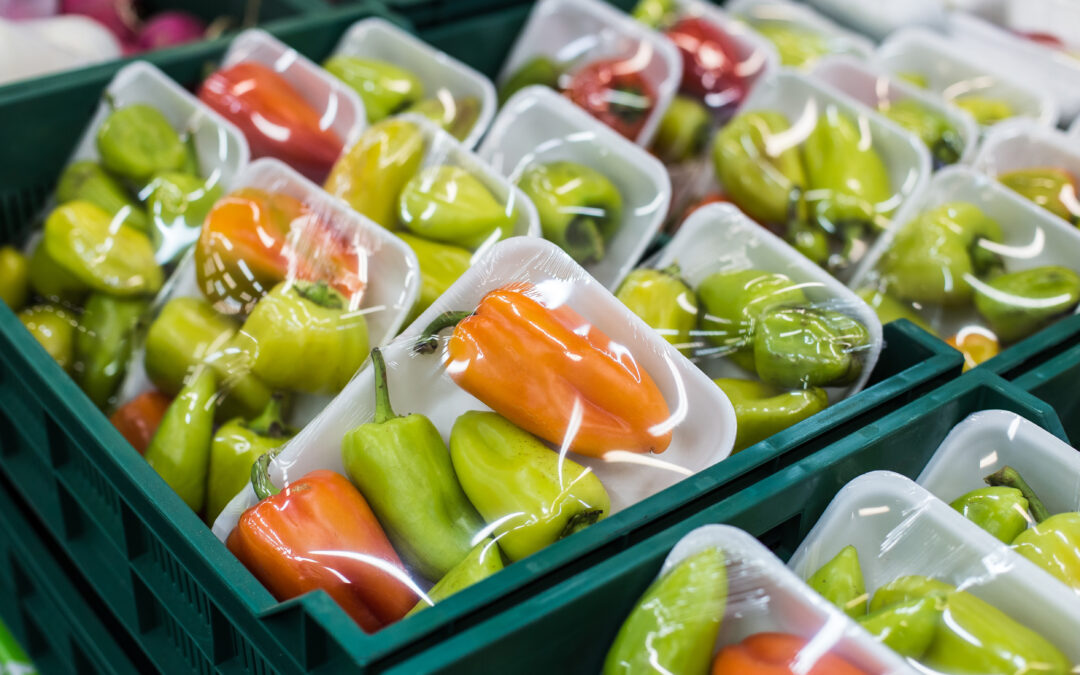What Is Polyethylene Packaging?
Since its discovery in the early 1930s, polyethylene has become the most widely used plastic in the world. Polyethylene comes in various forms, ranging from strong, durable plastics to soft, flexible materials. It’s commonly used in the development of many types of goods, including toys, furniture, pipes, cables, bottles, bags, and tubing.
Benefits of Using Polyethylene for Food Packaging
As one of the most commonly used plastics for food packaging, polyethylene offers many advantages that can affect durability, safety, and shipping costs, among other factors.
Some of the most notable benefits of using polyethylene packaging for food include the following:
- Non-toxic | Polyethylene is a food-safe material that does not react with food products or leach harmful chemicals into foods.
- Versatile | Polyethylene is easily customizable and easily made into various shapes and sizes, making a suitable packing material for a wide range of food products.
- Cost-effective | Affordable and easy to produce, which aids in keeping production costs low.
- Lightweight | Easy to transport and ideal for shipping food products without significantly affecting weight limits.
- Durable | It’s a strong material that can resist the rigors of shipping and handling.
- Enhanced protection | Polyethylene is an excellent barrier to oxygen and water vapor, which can help extend the shelf life of many food products.
What Types of Polyethylene Packaging Does A-Pac Offer?
There are many classifications of polyethylene, but the types most often used in the production of clear, flexible packaging are low-density polyethylene (LDPE) and linear low-density polyethylene (LLDPE). Due to their pliability, versatility, and durability, both LDPE and LLDPE are ideal for producing bags, films, and sheets used in the packaging of consumer goods.
Most notably A-Pac uses LDPE and LLDPE to produce plastic packaging materials that include:
- Flat poly bags
- Wicketed poly bags
- Gusseted poly bags
- Poly bags on rolls
- Sideweld Poly Bags
- Bottom-seal poly bags
- Staple-pack poly bags
- Custom-printed poly bags
Common Applications of LDPE and LLDPE
Polyethylene Tubing and Packaging Bags
The versatility of LDPE products, like polyethylene tubing and bags, makes them ideal for wrapping consumer goods. The thickness of poly tubing and bags typically ranges anywhere from .75 to 6 mil.
Most packaging on the thinner side can be used for delicate goods like fruits and vegetables, while thicker packaging is best suited for sharp or abrasive objects like nails and screws. Additionally, polyethylene tubing can be cut and sealed at any length allowing it to fit an even more comprehensive range of products.
Stretch Film
Most extruded packaging films are made with LLDPE. A high stretch rate, low shrinkage temperature, and clarity make LLDPE the ideal type of polyethylene packaging for bundling items like canned goods and water bottles.
For Unlimited Polyethylene Packaging Solutions, Choose A-Pac
The best advantage of polyethylene packaging is its customizability. Whether it’s size, color, thickness, or branding, A-Pac can manufacture unlimited combinations. We understand that your business has unique needs, and we strive to meet them with every order. That’s why we’ve paired customizable products with no minimum order requirements.
Whether you need polyethylene packaging for perishable goods or industrial packaging, we can make it. To learn more about our range of products, get in touch with our team or request a quote to get started.


